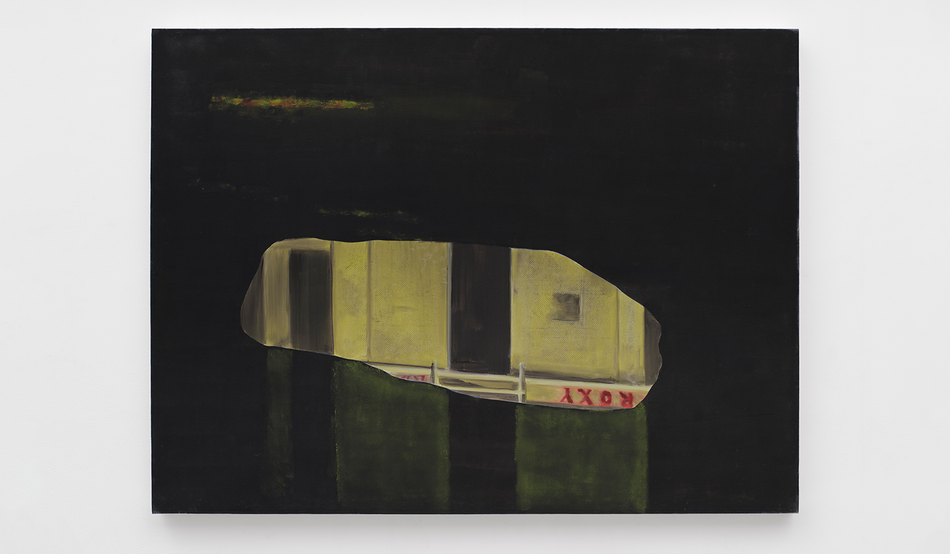One of the most insightful things the painter Dexter Dalwood ever learnt about English painting came from an American. He recalls to me a time he was listening to the artist Alex Katz, who was discussing the selection of works he had chosen from the Tate’s collection to display alongside his own for a show at St Ives. “There was a painting by Thomas Lawrence, it was like a 19th-century British painting. And Katz said the thing about Lawrence is that he has this inherent thing that English painting has: elegance. I’ve never heard an American artist ever speak about Englishness or English painting. And I thought that was really kind of cool.”
Now himself at a step removed from “the culture”—having lived in Mexico City since 2020—Dalwood has found himself spending a lot of time thinking once again about what Englishness means, at least when it comes to painting. “You start thinking about the idea of, you know, what is it? What is that thing?” he says. “What is the idea, if you had to define something by what was English about it?”
The outcome of this line of questioning is a new series of paintings currently on display at London’s Lisson Gallery. At first glance, it might seem as though Dalwood has dropped the scenes of liminal non-places for which he made a name for himself—the insides of taxis and airplanes, the carefully constructed interiors representing specific, often niche, moments in history—in favour of something more tangible. We find a nod to David Bowie, whom Dalwood sees as the textbook English flaneur; we see allusions to the occultist Aleister Crowley; to the Pre-Raphaelites; to key dates and years such as 1066 and Bloody Sunday. Very soon, however, you realise that the non-place and the nation state are not quite as diametrically opposed as might be assumed. National identity, too, is something slippery and ill-defined; it too is a carefully constructed fiction.
Dalwood is keen to stress that he is not attempting to make any definitive comment on what “Englishness” is with these works, at least not insofar as such a definition might create a checklist by which other things—or other people—can be said to pass or fail. As a consequence, he has stayed, mostly, on more subjective terrain: the specific places he remembers from his youth, the music he listened to, the kind of English painting he himself admires. “The biggest influence on my painting hasn’t just been English painting or other paintings, it’s been the music I’ve grown up with,” he says. “It’s what’s also influenced what I feel is the culture.”
Standing before Punk is Dead, a large canvas of the famous London punk venue Roxy Club seen obliquely from a dark puddle—mirrored and upside down, its red neon sign giving out an eerie hue—Dalwood tells me of the strangeness of watching this crucial period he lived through become “solidified” into something completely unrelatable. “What is now becoming the history of punk isn’t quite what I recognise,” he says. “I did always think, okay, punk isn’t dead. The spirit of it is maybe still a possibility, but actually the thing really is finished.”
Dalwood’s paintings are always fascinating, and these works are no different; here, the added symbolism and allusions make them almost like puzzle boxes waiting to be solved. Though I can’t help but feel that the answer to that puzzle tells us less about Englishness than it does about Dalwood’s own life. And who is it for anyone to question how somebody defines the signifiers and markers of their own identity? Thus national identity once again passes us by, as elusive as ever.
But by failing to say much about Englishness or the tradition of English painting, Dalwood perhaps inadvertently gets closer to how most of us actually experience our national identity: as a vague collection of personal experiences, ideas, attitudes and cultural reference points that only form a coherent sense of self when they aren’t interrogated too closely—because it’s only when they are interrogated that we notice all the contradictions and essential arbitrariness that hold them together. If national identity is any lens with which to view the world, it is one that makes most sense when out of focus.
Dalwood has, likewise, only been able to come at his national identity obliquely: through the reflections in puddles; in images refracted through fragments of broken glass; a figure slumped off to one side, as if slinking off camera. Maybe none of this feels close enough to the heart of the matter—but it might be about as close as any of us can get.
Dexter Dalwood: English Painting is on display at Lisson Gallery until 14th December
This article has been amended to correct that Dalwood did not curate a show at Tate St Ives with Alex Katz; Katz had in fact curated a selection of works to display alongside his own














